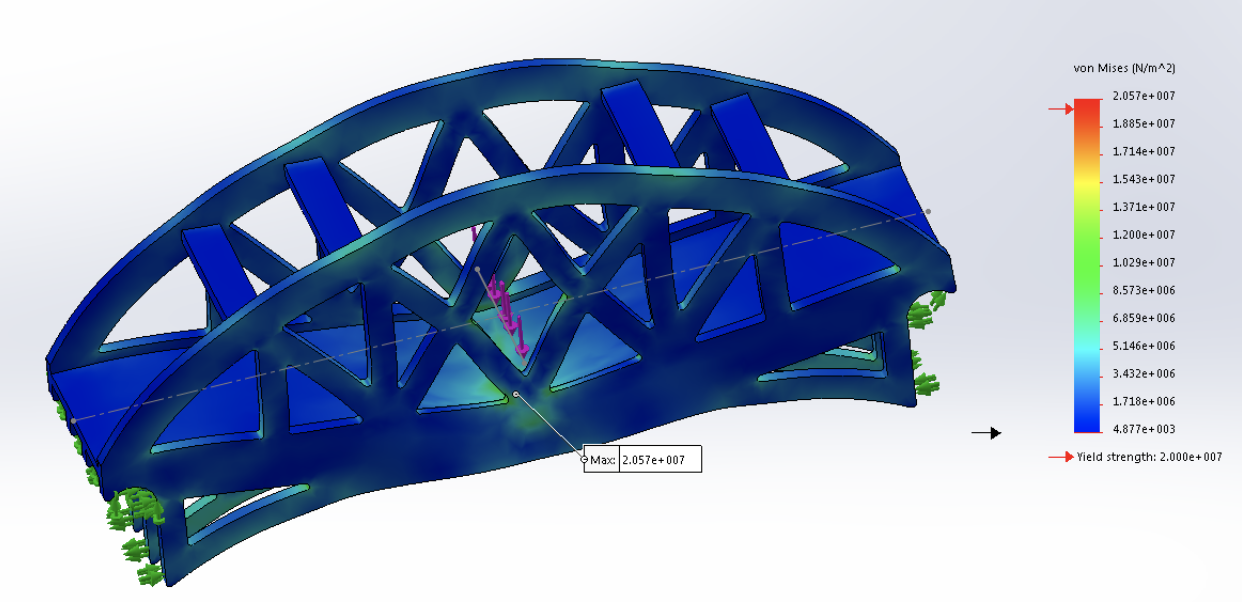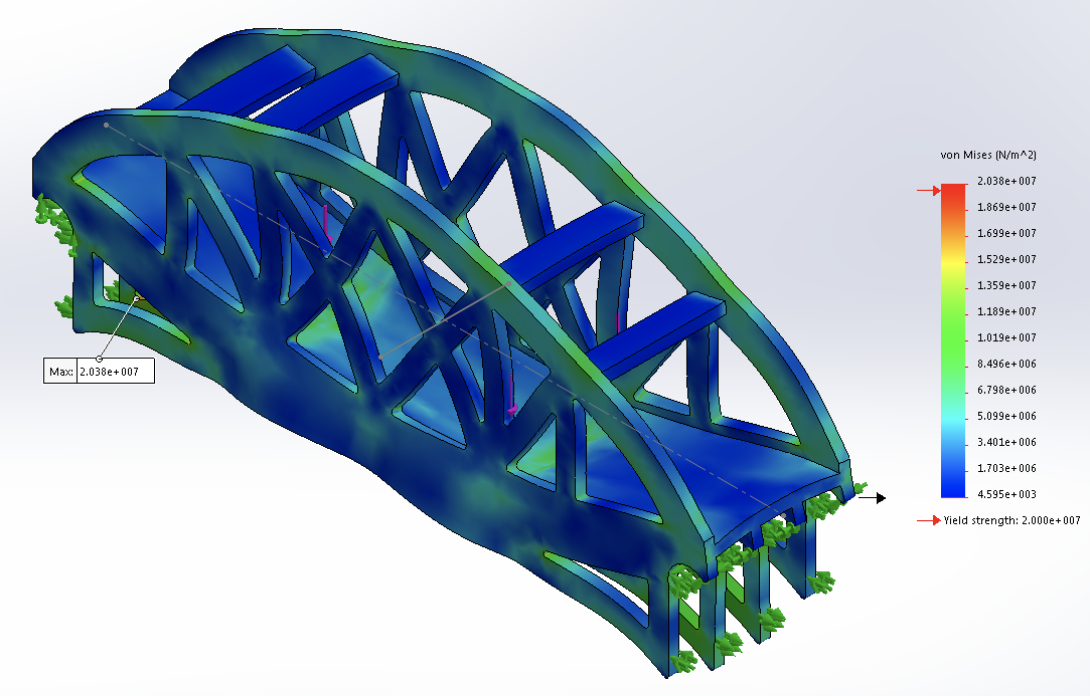Bridge
Skills Learned:
3D Modeling using CAD SolidWorks.
Load testing using solid works analysis.
Research on strongest bridge designs.
Role:
Research/Design strongest bridge with optimal strength to weight ratio.
Results
Our final design for our bridge failed in the upper arch near one of the cross beam that attach to the truss. The purpose of an arch is to distribute vertical force into horizontal direction ,therefore the arch is placed in compression and is supported by all the beams within the truss to minimize compressive force on the arch. The cross beams were placed to prevent the upper arches from caving inward. A combination of the stress caused by the compression of the arch and the support beam caused a lot of stress on the thin piece of truss between the beam and the outer edge of the truss, which caused a crack.
Analysis
We predicted that the deflection for a 1kN load would be 0.387mm, however, our actual deflection was 0.71mm. We also predicted that the max load at failure would be 5kN, whereas our actual max load was 13.95kN. Our estimate for deflection was a 45.5% off from the actual deflection, and our estimate for max load was 64% off of the actual max load. We could have improved the accuracy of our analyses/predictions by accounting for different variables such as the strength of bridge when glue was applied and the gaps present after construction. When we made our predictions we did not account for the inconsistencies that are present in the fitting of one piece to another. These inconsistencies would offset the bridge and spread out load differently compared to the ideal situation of perfectly fitting pieces with no offsets. If we had to design and scale-model differently we would try to use less material by using ⅛’’ plywood and possibly using gusset plates. Gusset plates would reinforce trusses from caving inward or outward. Improving the cross beams by experimenting with I-beams. Next time we will experiment with removing no force members and members with minimal stress in order to reduce weight and increase efficiency. Our bridge was 583.24g, and if we decreased the weight by 100g, we could have been first place in efficiency. We did not anticipate our bridge holding as much load as it did, but we attribute that to the number of thick arch trusses we incorporated into our design, the reinforcements that held the trusses and the bottom plate together, and the copious amount of glue we used.





